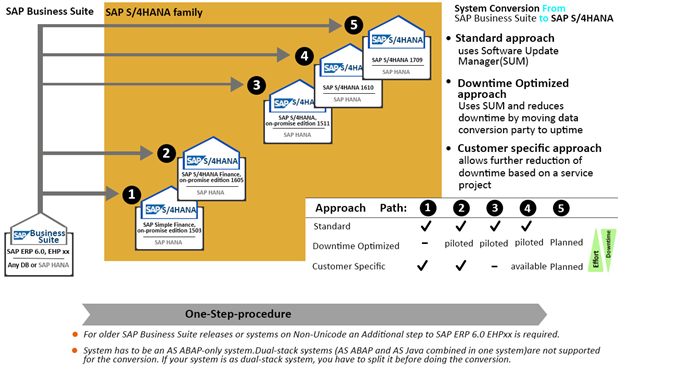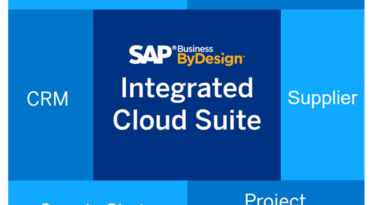SAP Buisness Suite
Step 1: Maintenance Planner
This is used to verify and Enterprises business functions, IT system add-ons, and industry solutions. If this particular, check does not yield a conversion path which is valid then the maintenance planner will put off the system conversion as the stack XML file cannot be created. Ok for this would be when an add-on has not been published yet. In such a case associated partner should be informed about researching when the add-on will be released. When it comes to sandbox system conversions it is possible to generate an exception and go ahead with the system conversion without the add-on release.
Step 2: Simplification List
This will offer a lengthy description of how SAP S/4HANA will affect individual transactions along with solution functions of the SAP ERP system and this will be done on a functional level. When such a list displays functions and transactions no longer exist, it does not essentially mean that the particular functions will be lost. It actually means such functions will be integrated with other components are reflected in a new architecture or solutions.
Distinct objects of the above-mentioned simplification list are reliance upon the existing SAP S/4HANA feature package stack and can be classified as:
- Changes to existing functions
- Functions no longer supported
- Functions that are no longer strategic
Presently a large number of objects within the simplification list can already be assessed through the use of Pre-checks. There are of course leads to processes which are automated and which can be used to find whether simplification objects are appropriate or match with customer specific system usage and if such objects are being planned. Also, you should remember that all search points are not relevant to the system instead the required effort for the conversion should be found for relevant points.
Step 3: Pre-Checks
Pre-checks review the system settings that are required to perform the actual system conversion. These are available to customers in the form of SAP notes, and can therefore also be used in step 2.
Step 4: Review the Customer Codes
This is a mission-critical feature of SAP S/4HANA and is the simplification of the data model. SAP office compatibility views for tables that are not required anymore while migrating to SAP S/4HANA. SAP also offers check tool that is founded on SAP NetWeaver 7.5 which verifies required adjustments such as adjustments needed for field length extensions. Simplifications in SAP S/4HANA can be imported from a file and contrasted with code extracts of SAP ERP systems. The reviewed customer code and the indication as to the code are required to be changed is given within a list so as to improve the chances of compatibility with SAP S/4HANA. There are also detailed plans to completely integrate such checks as a variant of the SAP code inspector in the near future. Currently, the tool is checking of adjustment of material number lengths.
Migration via SAP S/4HANA Finance:
Migration to SAP S/4HANA can also be executed along with an intermediate step for SAP S/4HANA Finance. Simplification of Logistical processes has not yet been done in this particular step. Technically speaking, this is actually an add-on which is made available for enhancement package 7 for the version 1503 or even as an add-on for enhancement package 8 for version 1605. To reiterate, such a migration is made possible in a single step and for this, the system must be Unicode. SAP also offers customers with ABAP reports to check needs for this type of migration, such a report must be executed in the local SAP ERP system.
Conclusion: ( NOT Req only for ref )
Enterprises have multiple options to adopt SAP S/4HANA. Enterprises that are not on SAP ECC will require a fresh implementation of S/4HANA. Businesses which are running SAP ECC currently will need a thorough assessment of the existing setup and the utilization of SAP is a prerequisite to decide which path of adoption to take on. For the most optimal setup, system conversion is the best method. There may also be many scenarios in which most such implementations are not optimal. In such situations, it is best to go ahead with brand new implementation of SAP S/4HANA while taking on standard best practices to the extent possible.





BWER Company is Iraq’s leading supplier of advanced weighbridge systems, offering reliable, accurate, and durable solutions for industrial and commercial needs, designed to handle heavy-duty weighing applications across various sectors.